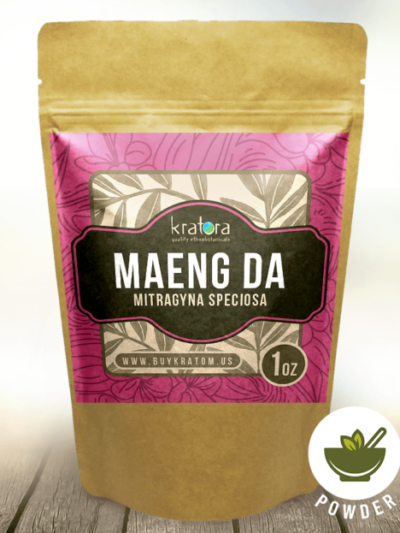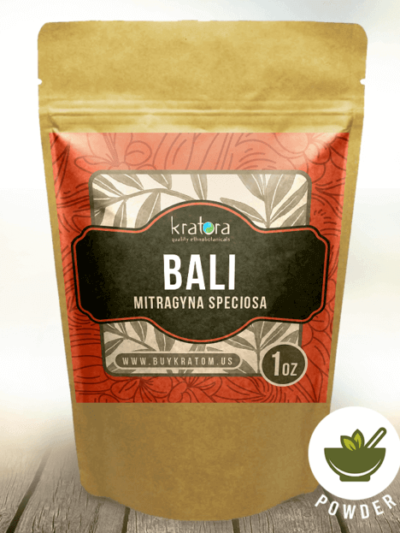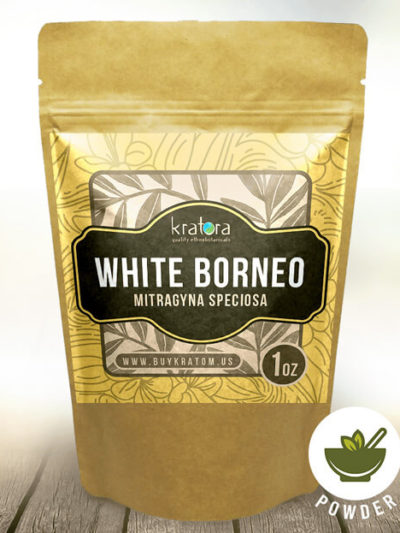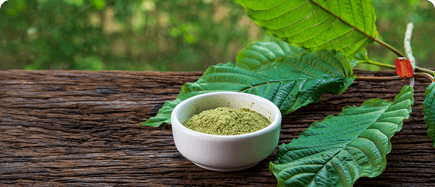One of the things that makes kratom especially attractive is the amazing variety of properties that it displays. Unlike species such as Arabica coffee, which is fairly standardized (and also very delicious!), Mitragyna Speciosa displays stark differences between varieties or strains, vein colors, and even between batches of the exact same variety and geographic location. So, what causes these differences, and can the alkaloid content of kratom be intentionally altered? Let’s take a look at the factors that affect alkaloid content in kratom.
1. Plant Variety
Firstly, while Mitragyna Speciosa is a single genus in the botanical sense, regional variations contribute to natural changes in alkaloid content. It’s similar to the development of languages. For example, English initially spread from England after several major developments in its homeland, the time at which it was exported to different countries, and the ethnic mix of the people in each place led to different — but related — varieties of English developing.
Plant varieties follow a similar pattern. While structurally the same, Mitragyna Speciosa trees that were situated in Thailand, Malaysia, Borneo, and Sumatra for thousands of years gradually developed specific traits — influenced by the climate, soil composition, sun exposure, and their roles in the local ecosystems. These differences affected the alkaloid profile of the leaves, which remains even when a variety is grown outside of its original geographic location.
Alkaloid Profiles by Region
In 2018, an in vitro study was published that specifically examined this phenomenon. In the study, the researchers took samples of five popular kratom strains and extracted the alkaloids through magnetic stirring. After a laboratory analysis, these were their principal findings:
- 24 alkaloids were identified in Red Bali.
- 11 compounds were identified in Red Thai, Red Malay, White Borneo, and Green Malay.
- Red Thai, Red Bali, Green Malay, and White Borneo had a higher percentage of mitragynine compared to paynantheine, whereas Red Malay contained more paynantheine than mitragynine.
- Green Malay contained the highest percentage of mitragynine and total alkaloids of the five samples, showing “remarkable and significant antinociceptive and anti-inflammatory activity” in mice.
What these findings show is that the geographical variety and vein color have a clear impact on the number of alkaloids present, the percentage of the extract that they occupy, and which alkaloids are more abundant. Please be aware as you read that samples from the same country may differ, so these results can not necessarily be applied to the strains that we sell at Kratora.
2. Time of Harvest
Babies are not born mature, and neither is Mitragyna Speciosa. If you’ve ever looked into growing your own kratom — a challenging undertaking — then you’ve seen in the guides that the tree takes at least two years to grow and should only be harvested once the plant reaches 20 feet in height. In the wild, many Mitragyna Speciosa trees have had hundreds of years to mature, making wild-harvested kratom especially valuable.
The point at which the leaves are harvested also affects the alkaloid content. Young, green leaves begin with a certain alkaloid profile. However, the concentration of different alkaloids changes as the leaf matures until it is either harvested or drops naturally from the tree.
Seasonal Differences
Even though Mitragyna Speciosa is an evergreen tree — that is to say that it’s never completely bare — the wet and dry seasons that occur in the region affect the potency of the plant’s alkaloids. Generally, the tree is the greenest and produces the most leaves during the wet season, but the alkaloids are highest during the dry season. The ambient temperature and number of hours of sunlight also affect the presence of alkaloids, with the leaves at the top of the tree typically displaying different properties from the shady branches lower down.
As you can see, knowing exactly when to harvest the most potent kratom leaves is an art that takes generations to perfect. We are indebted to our experienced harvesters for sharing their valuable knowledge with us!
3. Soil Composition
In the forests where Mitragyna Speciosa naturally grows, the soil is naturally rich in humus, which ensures adequate drainage around the roots and a healthy web of soil life below the surface. On the islands of Indonesia, volcanic activity has left mineral-rich deposits that act as a natural fertilizer for the trees. However, while we know that kratom grows best in its native environment — as described above — the exact relationship between fertilizer and alkaloid content has been hard to pin down.
A study published in 2020 examined the effects of four different fertilizer rates on 68 kratom trees that were cultivated from the same mother stock. They found that fertilizer use led to a higher rate of tree growth, but that there was no reliable connection between nitrogen use and levels of mitragynine, paynantheine, speciociliatine, mitraphylline, and corynoxine per leaf dry mass. There was, however, an increase of speciogynine, corynantheidine, and isocorynantheidine per leaf dry mass with low and medium applications of fertilizer. Further research could help us discover which fertilizers help to boost specific alkaloids.
4. Drying, Packing, Handling, and Storage
Maeng Da Kratom Powder
From $19.99
Shop Now
This product has multiple variants. The options may be chosen on the product page
Quick ViewPremium Commercial Bali Kratom Powder
From $12.99
Shop Now
This product has multiple variants. The options may be chosen on the product page
Quick ViewWhite Vein Borneo Kratom
From $11.99
Shop Now
This product has multiple variants. The options may be chosen on the product page
Quick ViewThai Red Vein Kratom
From $14.99
Shop Now
This product has multiple variants. The options may be chosen on the product page
Quick View
Green Malay Kratom Powder
From $12.99
Shop Now
This product has multiple variants. The options may be chosen on the product page
Quick View
As we’ve seen, there are a myriad of factors that influence alkaloid content while the leaves develop. However, the moment of harvest isn’t the end of the story when it comes to alkaloids. Like most bioactive compounds, the alkaloids in kratom don’t last forever, and the leaves must be carefully handled to protect the alkaloids in transit.
After Kratora’s kratom leaves are picked, they are dried using techniques that preserve the alkaloids present. They are then packaged in airtight bags to protect them from exposure to light, oxygen, humidity, and contaminants. After the leaves are ground into a sugar-fine powder, we package them immediately in secure, airtight, heat-sealed bags and ship them as quickly as possible to your door after sending them off for third-party lab-testing. To conserve the alkaloid content for longer, we recommend storing your kratom in airtight containers in a cool-dry location that is protected from direct sunlight. Generally, kratom should be used within one calendar month.
Want to know more about the different varieties of kratom that we sell here at Kratora? Browse the detailed articles on our blog and shop our complete range of kratom online.
Please note that the US FDA has not approved kratom to be sold for human consumption, sold for external use only. The statements in this article have not been evaluated by the FDA. None of the products sold on our website are intended to diagnose, treat, cure, or prevent any disease or medical condition.
Want to learn more about kratom quality and value? Start here:
Why Buying Cheap Kratom Can Be Dangerous







